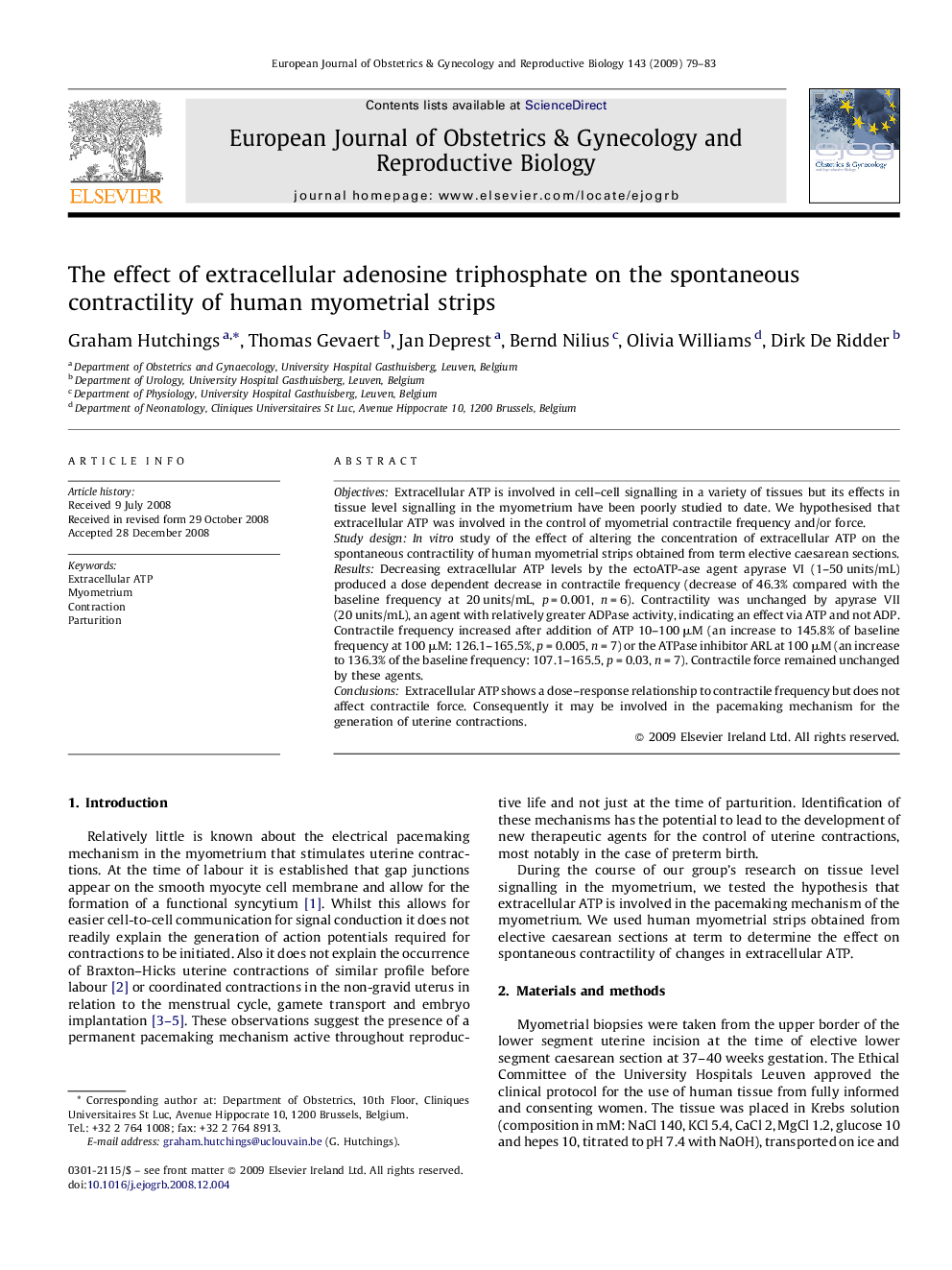| Article ID | Journal | Published Year | Pages | File Type |
|---|---|---|---|---|
| 3921956 | European Journal of Obstetrics & Gynecology and Reproductive Biology | 2009 | 5 Pages |
ObjectivesExtracellular ATP is involved in cell–cell signalling in a variety of tissues but its effects in tissue level signalling in the myometrium have been poorly studied to date. We hypothesised that extracellular ATP was involved in the control of myometrial contractile frequency and/or force.Study designIn vitro study of the effect of altering the concentration of extracellular ATP on the spontaneous contractility of human myometrial strips obtained from term elective caesarean sections.ResultsDecreasing extracellular ATP levels by the ectoATP-ase agent apyrase VI (1–50 units/mL) produced a dose dependent decrease in contractile frequency (decrease of 46.3% compared with the baseline frequency at 20 units/mL, p = 0.001, n = 6). Contractility was unchanged by apyrase VII (20 units/mL), an agent with relatively greater ADPase activity, indicating an effect via ATP and not ADP. Contractile frequency increased after addition of ATP 10–100 μM (an increase to 145.8% of baseline frequency at 100 μM: 126.1–165.5%, p = 0.005, n = 7) or the ATPase inhibitor ARL at 100 μM (an increase to 136.3% of the baseline frequency: 107.1–165.5, p = 0.03, n = 7). Contractile force remained unchanged by these agents.ConclusionsExtracellular ATP shows a dose–response relationship to contractile frequency but does not affect contractile force. Consequently it may be involved in the pacemaking mechanism for the generation of uterine contractions.
